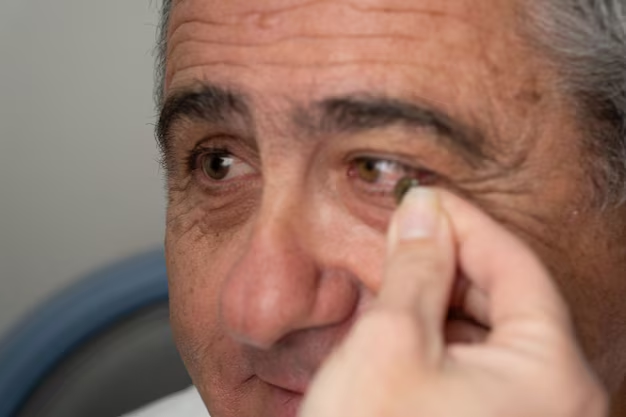The Connection Between Diabetes and Cataracts: What You Need to Know
When it comes to eye health, cataracts stand as one of the most prevalent issues, particularly as individuals age. A crucial question often posed is: Can diabetes cause cataracts? This isn't just an abstract inquiry; it's a practical concern for those living with diabetes, given the potential impacts on quality of life. Understanding the relationship between diabetes and cataracts is essential for anyone looking to preserve their vision.
What Are Cataracts?
Cataracts are cloudy areas that form in the lens of the eye, leading to a decrease in vision. Over time, this condition can significantly impair one’s ability to see clearly, often making activities like reading, driving, or recognizing faces challenging.
How Cataracts Develop
Typically, cataracts develop slowly and are more common among older adults. They occur when the proteins in the eye lens break down and clump together, forming a cloudy area. This clouding can progress, potentially covering the entire lens if not treated.
Symptoms to Watch For
- Blurred or cloudy vision
- Difficulty with vision at night
- Sensitivity to light and glare
- Seeing "halos" around lights
- Frequent changes in prescription glasses or contact lenses
Understanding Diabetes
Diabetes is a chronic condition affecting how your body turns food into energy. There are mainly two types of diabetes: Type 1 and Type 2.
Type 1 vs. Type 2 Diabetes
- Type 1 Diabetes: An autoimmune disorder where the body attacks insulin-producing cells in the pancreas.
- Type 2 Diabetes: A condition where the body becomes resistant to insulin, often related to lifestyle factors such as diet and exercise habits.
Common Challenges
Living with diabetes often requires vigilant health management, including regular blood sugar monitoring and making lifestyle adjustments. The long-term complications can include neuropathy, kidney damage, and notably, eye conditions like diabetic retinopathy and cataracts.
The Link Between Diabetes and Cataracts
Now, let’s address the pivotal question: Can diabetes cause cataracts? The answer is generally affirmative. Here’s why:
How Diabetes Influences Cataract Formation
Elevated Blood Sugar Levels: In diabetes, high blood sugar can lead to the accumulation of substances like sorbitol in the lens, which attracts water and clouds the lens.
Oxidative Stress: Diabetes can accelerate the oxidative stress on eye lenses, leading to expedited cataract formation.
Age Factor: While age is a significant factor in cataract formation, individuals with diabetes are at risk at a younger age compared to those without the condition.
Research Consensus
General expert consensus suggests that people with diabetes are more likely to develop cataracts and at an earlier age. This correlation underscores the importance of managing blood sugar levels not just for overall health, but for eye health as well.
Mitigating the Risk
Reducing the risk of cataracts when you have diabetes involves consistent management of your condition and proactive eye care.
Diabetes Management Tips
- Maintain Blood Sugar Levels: Keeping blood glucose levels within your target range is crucial.
- Healthy Diet and Exercise: A balanced diet alongside regular physical activity can influence diabetes control positively.
- Regular Checkups: Frequent visits to healthcare providers help in early detection and management of potential complications.
Eye Health Precautions
- Annual Eye Exams: Regular eye check-ups can help catch early signs of cataract development.
- Sunglass Protection: Wear sunglasses that block UV rays to prevent additional stress on the eyes.
- Avoid Smoking: Smoking can exacerbate oxidative stress, increasing the likelihood of cataracts.
Related Eye Conditions in Diabetics
It’s important to recognize that cataracts are not the only eye condition associated with diabetes.
Diabetic Retinopathy
A significant concern for those with diabetes is diabetic retinopathy, which affects the retina and can lead to blindness if not managed properly.
Glaucoma
Individuals with diabetes are also at increased risk for glaucoma, a group of eye conditions that damage the optic nerve, vital for good vision, usually due to abnormally high pressure in the eye.
Practical Steps to Take
Here's a summary of key actions that can help mitigate cataract risk and manage diabetes effectively:
📝 Key Takeaways
- Blood Sugar Control: Aim for tightly controlled blood sugar levels to reduce the risk of cataracts and other complications.
- Regular Monitoring: Consistent eye exams can catch early signs of cataracts and other eye conditions.
- Healthy Lifestyle: Incorporating a balanced diet, regular exercise, and sufficient hydration fosters overall good health, supporting your eyes as well.
🔍 Next Steps
- Schedule regular appointments with both your general healthcare provider and an eye care specialist.
- Implement lifestyle changes as advised by your health team to reduce the risk of complications.
- Consider protective eyewear to shield against UV radiation.
Empowering Your Health Journey
Living with diabetes means being proactive about your health with an understanding of the possible complications. While diabetes can indeed be a contributing factor to cataract development, informed management and preventive measures empower individuals to maintain clarity in their vision and overall well-being.
Embarking on this health journey, remember that staying informed and engaged with your health not only protects your eyes but enhances your quality of life every day. Every step taken to understand and manage diabetes more effectively is a step towards healthier living, with clearer vision as a testament to that commitment.
